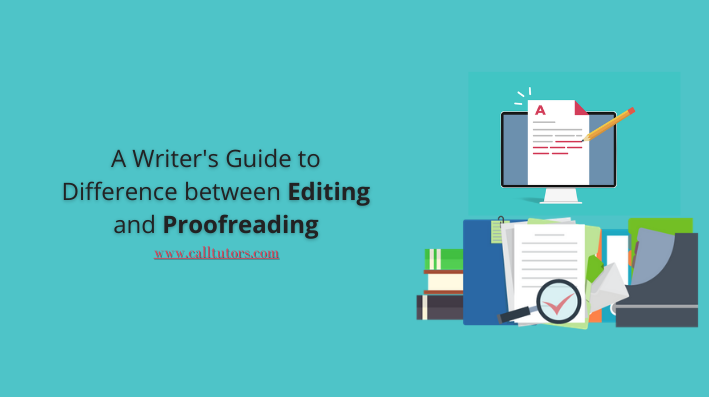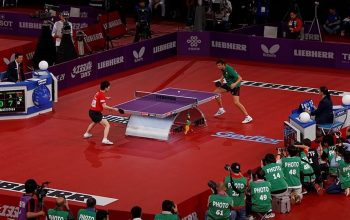Many people use the words ‘editing’ and ‘reading each other’ respectively. People here feel the same meaning for both words. People who even know the distinction between the two words tend to mistake each other. For instance, this mistake is like what they sometimes commit, if we write “our” rather than it. Although the two terms “editing” and “rectifying” are referred to in checking an accuracy document, they vary considerably from the others. Many of us do not know about this difference. Many clients who hire a professional editor or freelance writer do not even understand this difference too though. Users do not know what service they need, and the company or freelancer is not sure what they have to do with the job of editing or to edit the information. Such confusion leads to something new for the client several times than he has hoped. The difference between these two terms is very important to know. It is really important to know. Whereas the difference is very low, best paper writing service it is important to note that it is important. It is important. So knowing the difference between proofreading and editing, what is this difference? Let us find out: let us check out:
Proofreading
Doing editing is somewhat easier than editing. Flaws like grammatical inaccuracy, sorting mistakes, sentence formation, etc., must be checked in the document’s reconstruction. It also includes verification of the order or not of the syntax. When a reader writes the proof, the main thing they are trying to find out is to correct and correct all the hitting, typographical, grammatical, and examination malpractice errors. It might seem like a very easy task, but it is not. It seems that it is easy to do because a document contains only adjustments for surface errors. People tend to think it is not a demanding job since proofreading involves identifying and fixing inconsistencies and mistakes. One might think anyone could do this. They have to read the document and check for syntactic, grammatical closely, or nutrients provided errors.
Even so, it is not that easy. Research is a far trickier task. Evaluation involves extensive language knowledge and is a very talented task. It is not a cup of tea for everyone. It needs the potential for long stretches of focus. Our brain is very well suited to small yet obvious errors while reading a text. In other words, they cannot notice them in writing while we read, so our brain can auto-correct these little errors. In social media, they may have encountered exercises requiring which they read sentences or paragraphs comprising a slightly mistaken language. Because of our brain ability, we can read these terms and paragraphs. Proofreading is, therefore, a job for a professional. A professional proofreader is trained to identify these minor but apparent language errors scientifically, which would otherwise ignore the human eye. He understands the conventions and nuances of writing in a particular language. Since proofreading is his profession, he has extensive job experience and an eye for the usual errors. These errors that people generally tend to ignore are very frequently detected.
Editing
Editing is more than proofreading. That can be said. Alteration is a process far more involved than revision. That package is provided as a whole and. Correcting the error is simply the correction of surface errors like spelling mistakes, sketching errors, and spelling. It includes checking that the document, language elements, overall structure, material consistency, and the delivery of ideas and information have been produced in the most effective way possible. All aspects of the document must be checked: the facts are verified in the document; the information included in the document should be correct; the delicate sensibilities of the structural flow must be evaluated; the written text should be in keeping with the audience in dispute as well as the overall thematic strategy for this publication.
Editors have to also work on the piece to enhance their overall quality, while editing the revised content does not require a general addition to the document. It includes substituting words text with crisp, succinct words, adding or modifying paragraphs to make better use of language, and rendering the descriptions more vivid using words and phrases including similes, alliterations, and metaphors. To align the written piece with the overall theme editors, keywords, grab phrases, attentive elements have to be strategically introduced, and Jargon’s overuse is based on the audience’s specifications prevented. Editing involves reviewing the document’s meaning. The quality of the document must be verified.
Therefore, editing a document also involves making sure that the document is meaningful, with the sentences structured logically and reasonably with contradictions or any kind of. To improve the standard of the document, the editor may also delete or add certain pieces. The editing process involves making changes based on removing logical fallacies and eliminating repetitions of written text. Whenever it refers to holistic author health issues, editors must check if the authors have adequately addressed all of the questions, accounting essay help hypotheses, and concerns raised in adding paragraphs, whether every character has been correctly shut down and set, remove geographical, historical, or chronological contradictions from of the writing.
Editing might also include checking the word and phrase were syntactically contrasted. Typos errors have been created, vernacular misspelling and grammatical errors have arisen, including passive voice. It may also be necessary to check whether the gendered language was used properly. The editor will see that the writer has used the right words to express the ideas. Anything else, the editor can modify them. Editing may entail several text changes to ensure careful maintenance of the quality of the document. Sometimes editors will have to do tasks such as mentioning headers, selecting and placing appropriate headlines, and indexing tables and figures.
Conclusion
Editing and editing are completely different. Editing can be said to be an art to improve the overall quality of the document. It requires the editor to look at the document from any perspective possible and then make changes in these areas. It will include restructuring phrases, ensuring the arguments are correct, and improving the language. On the other hand, evidence can be called a science designed specifically for complete documents and articles. Going to review is a final task involving spell checking, grammatical checking, punctuation, and systemic errors. The quality of the article is enhanced, though in some way.



